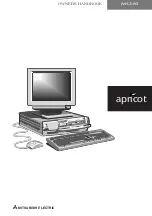
T H E B E G I N N I N G
1/8
3. If the liquid is thin and clear, try unplugging the keyboard,
turning it upside down to let the liquid drain out, and drying it
for at least 24 hours at room temperature. If the keyboard does
not work, call your supplier or an authorised maintainer.
4. If a solid object drops between the keys, turn the keyboard
upside down and shake it gently.
Do not
probe between the
keys as this may cause serious damage.
The mouse
The mouse is the most heavily used component of many systems,
particularly within Windows and is susceptible to damage, but a
little care should minimise this.
Dust and fluff often accumulates in the ball tracking mechanism of
the mouse and should be checked for regularly. To clean the mouse:
1. Unplug the mouse, turn it upside down and locate the plastic
cover that holds the ball in place. Depending on the model, the
plastic cover can be removed either by rotating it counter-
clockwise or by sliding it forward slightly.
2. Remove the cover and set it aside.
3. Cupping one hand over the underside, turn the mouse back the
right way up. The ball should drop into your hand.
4. Blow gently into the mouse to remove any dust that has
collected there.
5. Inside the mouse there are three small rollers. Using a cotton
swab moistened with a solvent cleaner, gently wipe off any oil or
dust that has collected on the rollers, rotating them to reach all
of their surfaces.
6. Use clear water, or water with a mild detergent, to clean the ball.
Then dry it with a clean, lint-free cloth.
7. Put the ball back in its socket and replace the plastic cover. It
should click into place.
The mouse cable should also be regularly checked for wear and tear,
especially near table or shelf edges.














































